Cleaning your makeup Brushes and Stuff:
Whether you suffer from acne or not, cleaning your makeup brushes and sponges regularly is important for your skin’s health.
Think about all the dried foundations, concealers and powders that are getting trapped inside your beauty blenders and brushes each time you use them.
While it might be convenient to ignore the obvious, the truth is that not cleaning these applicators each week is going to undeniably deposit bacteria and old makeup onto your skin with each subsequent use. And that’s pretty gross.

Why You Should Clean Your Makeup Brushes
For those of us who are prone to acne already, using dirty makeup brushes should be a cardinal skincare sin.
Using dirty makeup brushes can clog your pores, irritate your skin, encourage wrinkles, and even expose you to serious bacterial infections.
Needless to say, none of these things is going to help your acne much. In fact, using dirty makeup brushes is likely to counteract any good that your other skincare products and medications might be doing.
If you want to give yourself the best chance at having clear skin, you need to be cleaning your makeup brushes regularly.
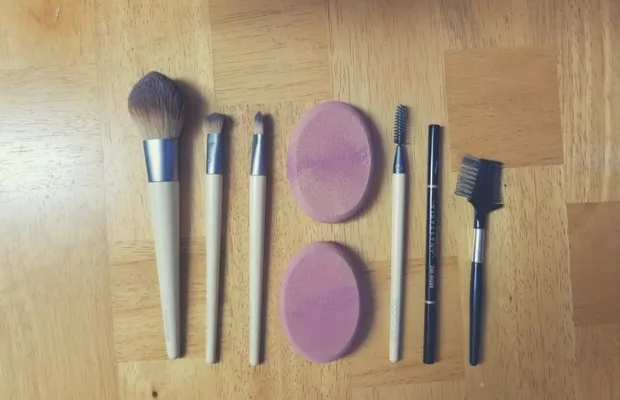
How to Clean Your Brushes at Home
You don’t have to use up all of your makeup remover trying to clean your brushes (which, regrettably, was the method I was using for a while). You also don’t have to buy an expensive cleansing product to clean them well.
You can clean your makeup brushes at home using two commonly purchases kitchen product: dish soap and cooking oil.
I just use a store brand anti-bacterial dish soap (whatever we’re using to wash our dishes that month). A huge bottle costs less than $2, so it’s a pretty low-cost way to clean my makeup applicators.
For the oil, you can opt to use whatever kind of cooking oil you like, but I personally prefer to use extra virgin olive oil. You could use vegetable oil too, but I’d recommend staying away from coconut oil, which can be comedogenic.
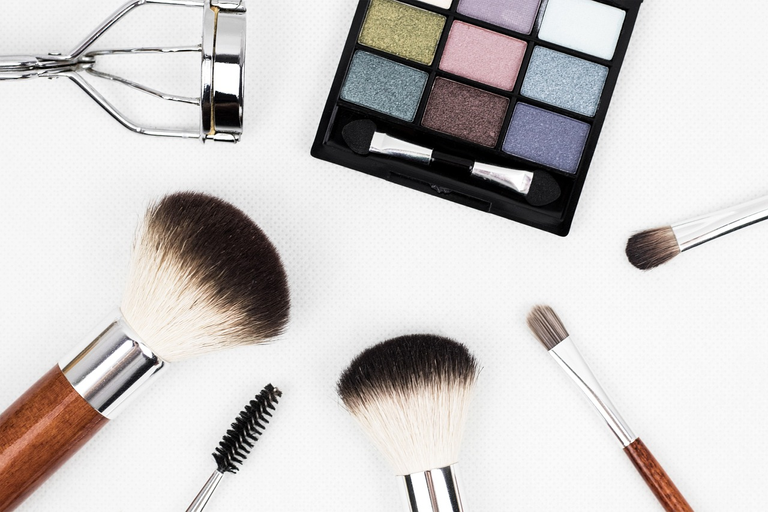
What you’ll need:
olive oil (or another kind of cooking oil)
dish soap
a sink
a light-colored towel (one that you don’t mind getting dirty)
your dirty makeup brushes and sponges
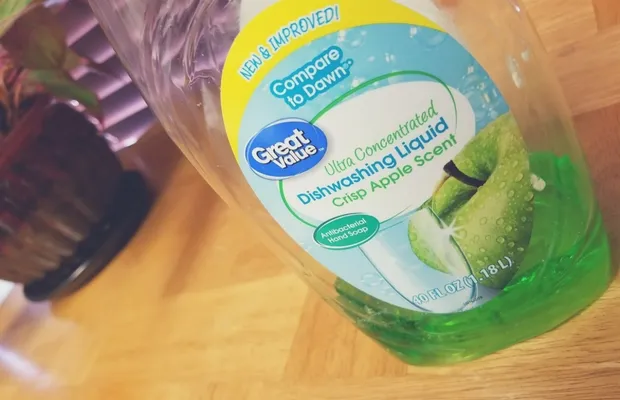
Steps For Cleaning Your Makeup Brushes
Pour a little bit of the cooking oil into a small dish or bowl. I usually fill a small ramekin with a quarter inch or so of olive oil.
Pick the smallest makeup brush you have to clean and dip it into the oil, swirling it around to knock off the makeup between the bristles. Drag the brush up the side of the dish, pressing it against the side of the ramekin or bowl as you do so to push the oil and makeup out of it.
After doing this a couple times, take the brush over to the sink and push the excess makeup and oil out by pinching the base of the brush’s bristles between your thumb and index finger. Gently pull the brush through your fingers to force the extra oil out. Then, rise the brush under warm water, trying to avoid soaking the base of the bristles as much as possible.
Wrap the brush between two folds of the towel and squeeze the towel around the bristles. This serves to not only squeeze out any excess moisture from the brush, but will also show you how clean or not clean the brush really is. If you’re still seeing a lot of makeup-colored liquid on the towel, repeat steps 2–4 again. Your goal should be to have little to no makeup remnants in the cleaned brush’s bristles.
Repeat steps 2–4 on the rest of your makeup brushes, moving from the smallest to largest of your brushes. (This is so the cooking oil isn’t made immediately disgusting by cleaning your larger brushes first.)
If you haven’t cleaned your makeup brushes in a while (or ever!), you can also dump the cooking oil out after it becomes irreparably dirty.
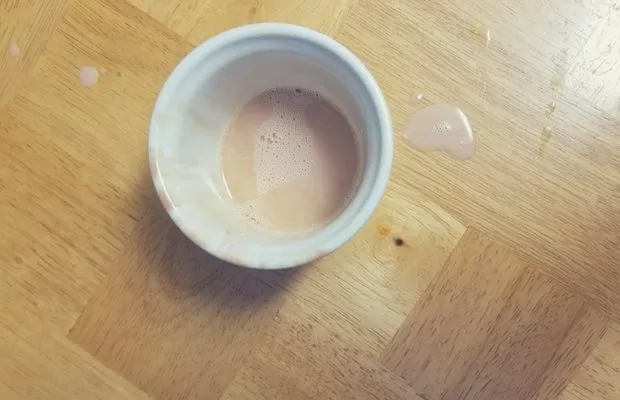
However, in the interest of conserving resources, I usually opt to use the same oil on all of my brushes.
Then again, I really only use three brushes, so that helps too.
Steps For Cleaning Your Beauty Blenders
Run some warm water in the sink. You can either opt to fill the sink with a few inches of warm water, of you can keep the water running continuously. Though, of course, the latter is a pretty big waste of water. =(
Massage one beauty blender at a time under the warm water. Work the water into the beauty blender to soften it up and get the blender to expand. (You probably won’t see much makeup or debris coming off the sponge at this point.)
Squeeze a drop of the dish soap directly onto the beauty blender. I usually use a drop somewhere between the size of a nickel and a quarter, depending on how gross my beauty blenders are that week.
Massage the soap into the beauty blender. I’ve found the most effective method to be to rub the soap gently along the surfaces of the blender, kind of like you’re applying lotion to your skin.
Once the soap is somewhat worked into the blender, you can start applying more pressure. Work the soap deeper into the sponge by squeezing the blender between your palms and rubbing them back and forth, kind of like shuffle-y prayer hands.
Submerge the beauty blender in the water again and continue massaging it. You should see a fair amount of makeup coming out of it at this point.
Repeat steps 3–6 two or three more times to make sure as much makeup as possible has been cleaned from the blender.
Wrap the beauty blender in the towel and squeeze the towel around it. Check to make sure the moisture squeezed from the blender isn’t still the color of your makeup. If it is, repeat steps 3–8 again.
This whole process can take a while, depending how dirty your makeup sponges are.
However, I’d say it’s completely worth the 15–20 minutes of cleaning time to make sure you aren’t slathering your face with bacteria and old products the next time you apply your makeup.
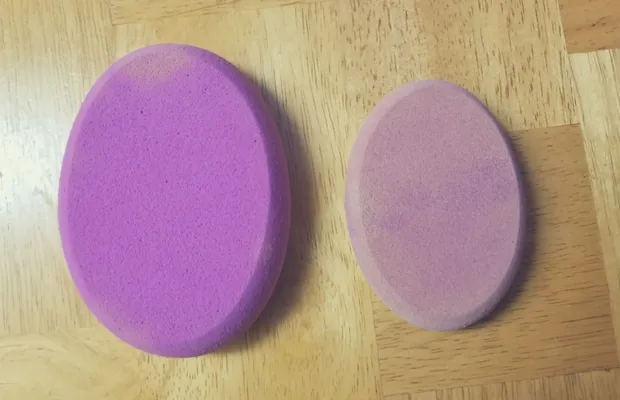
How Often Should I Clean My Makeup Brushes?
Dermatologists recommend cleaning your makeup brushes on a daily basis. BUT, before you start to panic, there are a few ways you can avoid going through the entire cleansing routine above each day.
One option is to use a makeup brush cleaner designed for daily application. Sephora, E.L.F., and BH Cosmetics all have daily brush-cleansing sprays available for less than $10.
Just spray your brush or sponge with the product each day, according to the package instructions. This should help eliminate the buildup of pore-clogging bacteria and reduce some of the product buildup in your brushes throughout the week.
